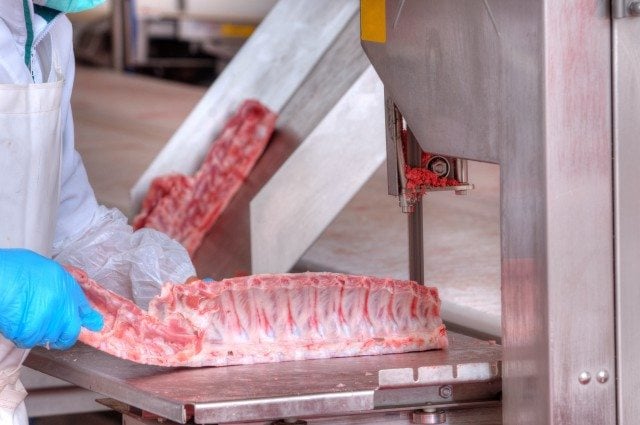The global market for food and beverage processing machinery was estimated at US$46.2 billion in 2016.
It is forecast to grow at a compound annual growth rate (CAGR) of 5.7%, reaching US$60.9 billion in 2021.
The Europe, Middle-East and Africa (EMEA) region had the largest regional market for food and beverage processing machinery in 2016, accounting for half of the total global revenue, followed by Asia Pacific at 29.3% and the Americas at 20.7%.
Among the various machinery segments, the global market for beverage processing machinery is forecast to grow the fastest, with a 6.5% CAGR from 2016 to 2021.
Regional markets
The supply of machinery to the food and beverage machinery sector is relatively concentrated among just a few countries.
The top five sub-regional markets in 2016 were China, Germany, the US, Italy and Japan.
Evolving stringent regulations in EMEA aim to protect a growing number of consumers throughout the region from food contamination and other ills.
These and changing market dynamics are leading companies to implement stronger internal risk frameworks.
Developing Asia-Pacific markets continue to support food and beverage processing machinery industry growth.
China’s growth will be steady over the next couple of years, while demand will stabilize in other Asia-Pacific countries.
Within this region, the majority of food and beverage processing machinery revenue went to China (34.9%) and Japan (30.2%).
With the improving standard of living in China, food consumption patterns are changing, which is increasing China’s potential as a food importer.
Despite China’s economic slowdown, total traded volumes are expected to remain stable.
Food and beverage demand in India will grow faster than in China in 2021, with machinery sales following suit.
Machinery segments
Consumers are increasingly demanding new beverage products for different occasions and times of the day.
This demand for variety is leading to greater investment in processing machinery.
Due to the diversity of the beverage industry, the machinery lifecycle is typically shorter than in other industries, as demand for modified and new products continuously changes. Companies modify offerings in line with how they think the market is moving, which can result in relatively frequent investments in machinery to produce new, alternative or modified products.
Global production of dairy products grew in 2017, driven by marginal increases in milk and cheese processing.
Growth was particularly strong for butter, with production growth in the double digits, owing to strong demand from consumers who increasingly perceive butter as a healthier alternative to margarine.
Global seafood markets were characterized by uncertainty in 2017, but economic growth in the US and the EU should have a positive effect on demand.
Despite the economic slowdown in China (a major exporter, processor and producer of seafood products), total traded volumes are expected to remain stable.
Demand for confectionery, which is not staple food, is linked to disposable income, which is slow growing in Western Europe (the region with the largest markets).
Processes can be more complex than in other markets, such as machinery used in fruit-and-vegetable processing and bakeries.
There is also a relatively high automation content, which contributes to a higher average selling price (ASP) than for most other machinery types.
Meat and poultry processing machinery was the largest machinery segment, comprising 21.6% of all food and beverage processing machinery in 2016.
The demand for chicken nuggets, sausages, drumsticks, strips, cutlets, and other processed poultry products has also grown over the past few years.
Prices for poultry are much lower than for beef and pork, and the cost to process poultry is also lower.
Consumer health concerns about eating red meat has caused an ongoing shift to poultry, while also bolstering the market for pork.
As a result, the demand for poultry and meat-processing machinery will increase over the next few years, as more health-conscious consumers avoid diets high in saturated fat.
Story by Sudhakar Chaudhary, Analyst, Manufacturing Technology, IHS Markit










